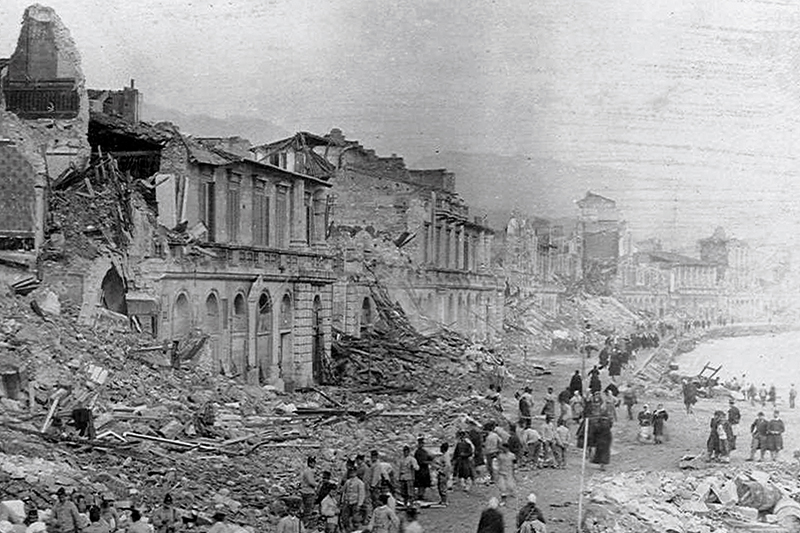The earthquake and tsunami in Messina and Reggio Calabria

On the morning of December 28, 1908, at 5:20 a.m., a massive 7.1 magnitude earthquake struck eastern Sicily and southern Calabria. The tragic event, which represents one of the most devastating tragedies ever to occur in Italy, nearly destroyed the cities of Messina and Reggio Calabria and caused extensive damage, covering an area of about 6 thousand square kilometers. The earthquake caught the population in its sleep, and the number of victims was around 80 thousand.
The damages were mainly caused by the poor resistance of the foundation grounds and the poor quality of construction. In Messina, the earthquake hit the historic center and the coastal area particularly hard. Significant buildings were razed to the ground, including the famous "Palazzata," the series of buildings lining the harbor that had already been destroyed and rebuilt after the 1783 earthquake.
About 10 minutes after the earthquake, a massive tsunami swept both coasts of the Straits, worsening the damages caused by the earthquake and creating new victims among those who survived the collapses and ran toward the sea to escape. Communication routes were blocked, roads and railroads were destroyed, and telegraph and telephone lines were partly interrupted because the tsunami broke submarine cables.
The earthquake's impact on the economy and demographics lasted for years. It caused temporary depopulation, followed by a migration influx driven by the demand for workforce for reconstruction.
The tragic event of 1908 prompted the government to mitigate earthquake effects by introducing seismic classification of the national territory and implementing specific building regulations. In 1909, the first Royal Decree introduced standards valid for the entire national territory.
Photo: The devastating effects of the earthquake of December 28, 1908, in the city of Messina / Underwood&Underwood, catalog number 10,495, public domain at commons.wikimedia.org